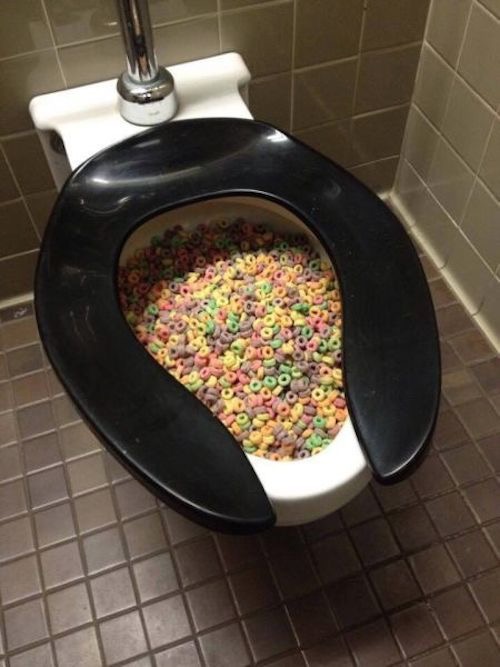Is it Permitted to Dispose of Food in the Toilet?
Is it Permitted to Dispose of Food in the Toilet?
Blog Article
We have stumbled upon this article on Think Twice Before Flushing Food Down Your Toilet below on the web and concluded it made perfect sense to relate it with you in this article.

Intro
Many people are commonly confronted with the problem of what to do with food waste, particularly when it concerns leftovers or scraps. One common question that develops is whether it's fine to flush food down the commode. In this post, we'll delve into the reasons why people could think about purging food, the consequences of doing so, and different methods for appropriate disposal.
Reasons that individuals might think about purging food
Absence of recognition
Some people might not be aware of the prospective damage triggered by flushing food down the bathroom. They may incorrectly believe that it's a safe technique.
Convenience
Purging food down the bathroom may seem like a fast and very easy option to disposing of undesirable scraps, particularly when there's no nearby garbage can readily available.
Negligence
In some cases, people may merely select to flush food out of sheer idleness, without considering the consequences of their activities.
Effects of flushing food down the bathroom
Ecological effect
Food waste that ends up in waterways can contribute to pollution and damage aquatic ecological communities. In addition, the water made use of to flush food can strain water resources.
Plumbing problems
Flushing food can result in clogged pipelines and drains pipes, triggering expensive plumbing repairs and hassles.
Sorts of food that need to not be flushed
Coarse foods
Foods with coarse structures such as celery or corn husks can get tangled in pipes and create blockages.
Starchy foods
Starchy foods like pasta and rice can absorb water and swell, causing blockages in pipes.
Oils and fats
Greasy foods like bacon or cooking oils must never ever be flushed down the bathroom as they can solidify and cause blockages.
Appropriate disposal methods for food waste
Utilizing a waste disposal unit
For homes equipped with garbage disposals, food scraps can be ground up and purged with the plumbing system. Nevertheless, not all foods appropriate for disposal in this fashion.
Recycling
Certain food product packaging products can be recycled, reducing waste and reducing environmental impact.
Composting
Composting is an environment-friendly method to dispose of food waste. Organic materials can be composted and made use of to improve dirt for horticulture.
The value of appropriate waste administration
Minimizing environmental injury
Correct waste administration techniques, such as composting and recycling, assistance decrease contamination and maintain natural resources for future generations.
Safeguarding pipes systems
By avoiding the method of flushing food down the toilet, home owners can avoid expensive plumbing repair services and keep the integrity of their plumbing systems.
Final thought
Finally, while it might be appealing to flush food down the toilet for convenience, it's important to recognize the potential repercussions of this activity. By adopting proper waste monitoring methods and dealing with food waste responsibly, individuals can add to healthier plumbing systems and a cleaner setting for all.
THINK TWICE BEFORE FLUSHING FOOD DOWN YOUR TOILET IN FALLBROOK CA
Let’s be honest, we’re really supposed to be tossing rotten or leftover food in the compost bin or trash can. But many people like to place scraps of food down the drain of, say, their kitchen sink. That’s why the garbage disposal was invented: so we can continue to place certain foods down the drain without clogging our drain in the process. Smart.
But not all of us have the luxury of having a garbage disposal installed. So, you might continue to shove food down your sink drain anyway – or worse: you might flush them down your toilet! If you’re guilty of doing the latter, you’re going to want to stop, and here’s why:
Toilet Drains Aren’t Designed to Handle Food!
There’s your answer: food just doesn’t belong in your toilet. It may seem like your toilet drain is wider than the drains of your sinks, but truth be told, that isn’t actually the case. The narrower pipes of your toilet leave your plumbing at risk for clogging if you do happen to flush your food. In addition, food doesn’t break down as quickly that toilet paper and human waste do. In turn, this leaves your toilet at risk for a nasty clog.
Although a flush of a tiny pinch of food every now and then isn’t going to completely damage your toilet, there are certain foods that should absolutely not be flushed in your toilet at all. These include starchy foods like mashed potatoes, grains, hard pieces of food that are slow to break down, and fats and oils.
The latter categories of food are particularly problematic as they may harden, expand as they absorb water, break down slowly in your system, or generally create the perfect obstruction with their gelatinous composition. These are all things you don’t want in your plumbing system!
Experiencing a Toilet Clog?
Nobody’s perfect, and we all make mistakes. Sometimes one of the mistakes people make is flushing food down their toilet and later realizing that it wasn’t the best thing to do once they see that their toilet is now clogged. Uh-oh!

I found that page about Flushing Food Down the Toilet? while surfing the internet. For those who liked our blog posting please do not forget to share it. Thank you for going through it.
Click For More Info Report this page